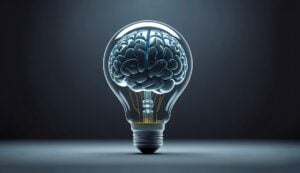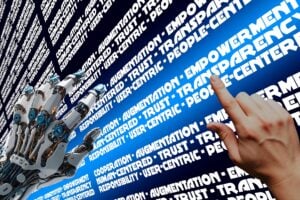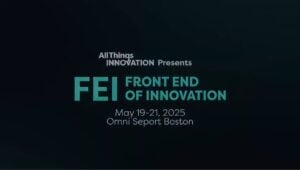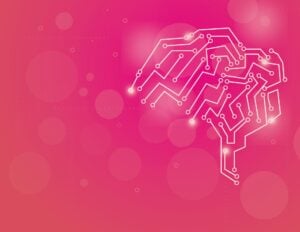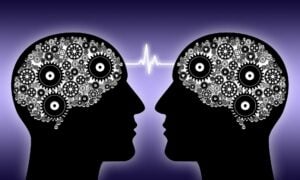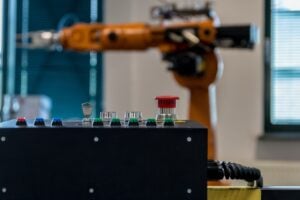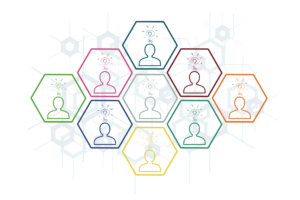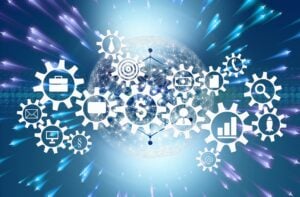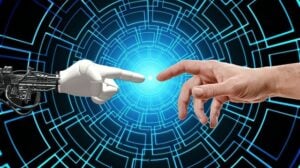The keynote was a fascinating perspective on artificial intelligence, as Bagalman and the other speakers examined the concept of AI and machine learning through the lens of data science, neuroscience, and cognitive science. The presentation also included Dr. Aaron Mattfeld, Director, Neuroscience of Memory and Development (MaD Lab) at Florida International University; and Inna Khazan, Author, The Clinical Handbook of Biofeedback, Instructor, Harvard Medical School.
As corporate debate surrounding AI intensifies, the session further explored the distinctions drawn by relevant scientific disciplines concerning consciousness, thereby facilitating more informed decision-making for business leaders. By bringing together experts from diverse fields, it aimed to provide a comprehensive overview of current understandings and debates around consciousness.
Welcome to the Machine
Consciousness is a complex and multifaceted phenomenon that remains a central question in science and philosophy. And now we have the rise of AI, bringing machine learning into the debate. Just tell us a little bit, from your perspective, this idea of consciousness and AI.
“It was a fascinating panel to have with the perspective of a neuroscientist, a psychologist and I’m just a little data scientist talking about algorithms,” says Bagalman. “The point was, you hear all this buzz about AGI, artificial general intelligence, and are we going to have machines that are thinking and conscious? And my answer is no. We put in inputs. There’s an algorithm. You get outputs. It is designed to seem very humanlike. But honestly, I gave the analogy that I put inputs into a vending machine. I put a dollar in, I hit the b, I hit the five, and then it gives me back a bag of Cheetos. I don’t sit around wondering what does it think about those Cheetos. One day, perhaps. But right now, the large language models that we have, they are machines. They output text, but they’re not thinking. They don’t have awareness of themselves.”
Expanding the AI Toolkit
At FEI this year, the days were split up into themes, such as an AI day, a human insights and human intelligence day. What are your thoughts about the collective intelligence theme for the third day and how it impacts you and your organization?
Bagalman relates, “Collective intelligence is what we need. Right? AI is a tool. It’s a powerful tool. You think about other tools. The invention of the wheel, fire, writing. These things have become integral not just to particular tasks, but to the way we set up our lives and the way we do business. We’re going to see that with AI. I spend half of my time downplaying to people that when you hear we’re about to have sentient AI, that’s someone who’s trying to raise venture capital money. The other half of my time, I spend explaining to people who aren’t using AI, no. This is the big new tool of this generation. We have to learn how to use it, how to incorporate it into our workflow, into our decision-making processes.”
He adds, “When you combine what you can get out of an AI tool that can look at so many data sources at once, that can help you view things from other perspectives, that can help you edit your writing, that can help you write a love poem to someone. Whatever it might be, the AI is a tool that can help us do things better and more efficiently, not replace those things.”
Pairing Data Science & Innovation
With AI becoming an important part of the tool kit for the modern-day innovator, just what about data science? What relationship does data science have with innovation?
“Data science has always been key to innovation ever since we developed the scientific method,” asserts Bagalman. “A key part of the scientific method is to run experiments and collect data. We may not have called it data science back then. We may not have been as sophisticated as we are now, but it’s always been there. And being able to look at data is what data science is about. It’s the science of managing and drawing inferences from data. And AI extends our ability in that tremendously.”
It brings us back to that thought process of collective intelligence, data science and innovation—and strengthening that partnership for the future of the innovation field.
Bagalman adds, “Is AI eventually going to be able to replace me? Maybe. Certainly, it’ll replace a lot of the things I do. I think we’re going to replace a lot of the time that my team and I spend writing code. I think it’s going to help us understand much more complicated data. It’s not about big data anymore. These days, it’s really about complicated data. AI can do that so much better for us if you’re trying to analyze data. Let’s say you’re trying to analyze social media data. For 15 years now, we’ve had tools that go through social media posts and tell you how many of them were positive about your brand or how many were negative about your brand, but there wasn’t that much that it could do. A large language model, it can be like a person reading it all for you and telling you insights that it drew from that. It’s a huge step forward.”
Contributor
-

Matthew Kramer is the Digital Editor for All Things Insights & All Things Innovation. He has over 20 years of experience working in publishing and media companies, on a variety of business-to-business publications, websites and trade shows.
View all posts















